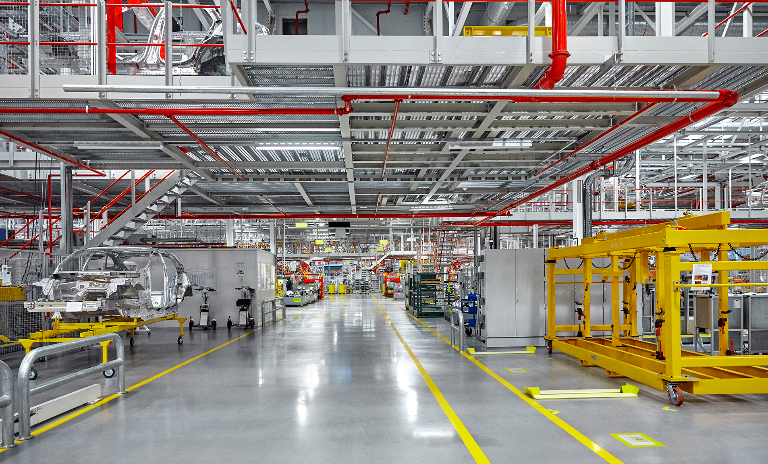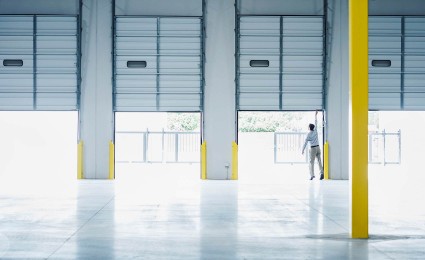

This crisis is different – Comparing the coronavirus crisis with the financial crash
Latest update of our corona economic impact series
Corona Economic Impact - Part 1
Corona Economic Impact - Part 2
The COVID-19 pandemic has now spread across the entire globe. But we are also beginning to see some positive signs. With China recording hardly any new infections, many countries in Europe, as well as the United States, are now also seeing a decline or at least a stabilization in the number of new cases. Many countries are talking about relaxing the lockdown rules or have already begun to do so. That said, the pandemic is far from over. Despite the start of some clinical trials, it is doubtful that a vaccine will be available this year. The development of effective drugs for patients suffering from the virus is also likely to take months.
Against this backdrop, we have adjusted our latest update on the economic impact of the coronavirus in two respects:
The scenario involving a four-week shutdown has now become unrealistic, so we are concentrating our analyses firstly on the scenario around a twelve-week shutdown of the economy. Our forecasts have been adjusted to reflect the latest developments. Secondly, we compare the current crisis with the most recent major economic upheaval, the global financial crash of 2008. In particular, we analyze how long various sectors of the economy are likely to take to recover from the current crisis and what specific situations state aid packages are having to mitigate today.

A look around the world
It is already clear that the global economy will take a massive hit from the impact of the COVID-19 pandemic this year. Contrasting with the situation during the financial crisis, global GDP growth will not only stagnate but will fall by more than two percent – after global growth of over three percent was forecast just a few months ago.
The economic slump will affect all regions and countries. China has already reported a 9.8% drop in GDP for the first quarter of 2020 compared to the previous quarter. Since the Chinese economy has now started up again but demand from abroad will be lacking for some time to come, we expect China's GDP to grow by just 2.5% in 2020. This is a decline of 3.5 percentage points compared to the forecast prior to the COVID-19 pandemic!
Europe and the United States will be hit even harder than China. In those countries, we expect the weeks of lockdown and the further measures to protect the health of the population to cause GDP to plummet by 5.2% (Europe) and 5.4% (USA) in 2020. Although we do expect the global economy to grow again in 2021, even in China, Europe and the United States, this growth will not be sufficient to offset the losses of 2020.
This crisis is different
In 2008, the crisis began with disruption to the US real estate and financial markets and only spread to financial and real economy in the rest of the world after a certain time delay. The COVID-19 pandemic is exerting a more radical and abrupt effect. It has put the real economy out of action immediately and completely – evaporating supply and demand simultaneously. Plant closures, initially in China, caused supply lines to dry up. Unemployment meant that workers lost their incomes while consumption declined and was further stifled by the fact that most shops were ordered to close.
The COVID-19 pandemic is hitting many industries harder than the 2008 financial crisis, and most industries will take longer to recover from the losses they sustain. Here we take a look at travel and tourism, the automotive industry, and the engineering sector as examples:
Travel has come to an almost complete standstill owing to border closures, quarantine regulations, and entry bans. Business and vacation travel has been rendered redundant, as it is neither possible to travel to nor to stay in most destinations around the world. What's so disastrous about this is that the industry will not be able to make up for these lost journeys, either. Video conferencing is currently replacing face-to-face business meetings. Workers are not able to postpone their annual leave – given the situation their employers are in – and are having to spend it at home instead. Any recovery for this sector is currently a distant dream.
The automotive industry is being pummeled by the COVID-19 pandemic at a time when it already has enough challenges to deal with in the form of digital transformation, electrification, and the development of self-driving vehicles. During the financial crisis, demand was stimulated by government measures such as car scrappage schemes. But there is doubt over whether this solution would help in the current crisis. After all, with consumers unsettled by plant closures, unemployment and short-time work, who will buy a car when their own financial prospects are uncertain? The automotive industry's recovery from this crisis can be expected to take longer than it did post-2008.
During the financial crash, mechanical and plant engineering suffered a drop in growth almost as severe as the automotive industry. As a result, while the engineering sector did recover, it remained persistently below pre-crisis levels, particularly in terms of profit margins. The current crisis is affecting the sector in a similar way to the automotive industry as it navigates an already difficult phase. In addition to weak margins, many engineering companies are also suffering from underinvestment, especially when it comes to digitalization. In contrast to the automotive industry, however, the engineering sector's recovery is unlikely to take longer than it did after the financial crisis, especially as companies have the opportunity to secure their profits through services, such as maintenance contracts.
Governments around the world have put together large-scale rescue packages to ensure the survival of their economies. Most of these packages are significantly larger than their equivalents in the 2008 financial crisis, and given the scale of the impact on the real economy as described above, it is right that governments have acted so comprehensively and with such speed.
However, it is also clear that government measures must be adapted to the specific conditions encountered in the current crisis. After all, governments must first and foremost protect the health of their populations. Health protection measures and actions to stimulate the economy must, therefore, be balanced. Merely copying the measures that worked in the financial crisis back in 2008 will not do any good in 2020. The measures that are currently needed to contain the pandemic, even if its effect is mitigated, will remain in force until a vaccine has been found and widely rolled out. Until this is achieved, we will all be working and consuming differently than we did before the crisis. The new reality will be different than the pre-crisis reality. Any attempt to grit your teeth just long enough to return to pre-crisis mode will fail resoundingly as this new reality bites. Companies and industries must respond to the current challenges by finding new answers to new problems.





